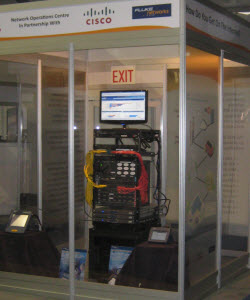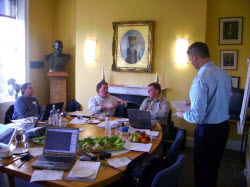9 September 2010
From Global Sponsor Partners to Global Industry Partners

By David Green and Martin Williams on behalf of the Global Industry Partners
Over the 60 year history of WorldSkills International (and its various identities) there have been many public and private sector supporters of the organisation and in particular the skill competitions. Business and industry has everything to gain by ensuring that these young Competitors and their mentors, get to showcase their skills and their training systems as models for the workforce industry to employ. By contributing time, materials, money and value-in-kind to local, national, regional and global skills events in a wide range of skills categories, industry has helped put Vocational Education and Training (VET) on show. It has also supported the agendas of government, education and all business sectors in focusing on youth, developing a skilled and job-ready workforce, economic growth and prosperity and ultimately national pride.
But just focusing on the competitions and its participants was not enough. Around the turn of the millennium, a number of corporate competition sponsors felt there was also a need for broader WSI infrastructure and increased outreach to external stakeholders. There were three objectives - to develop the WorldSkills operating infrastructure to better develop its true potential; to better achieve the WorldSkills mission by developing the Competition interface to the public; and to offer a more meaningful experience and added-value to VIPs visiting the Competition.
That more meaningful VIP experience started with industry sponsoring the first WorldSkills Leaders Forum at WSC2001 in Seoul, Korea. In 2006 there was a pivotal meeting in the UK Skills offices at the Prince’s Trust in London. At that meeting representatives from Festo, Fluke, and Cisco plus WSI and WorldSkills Calgary 2009 went further and formalised the mission and objectives of the growing team of sponsors – all fully aligned to the WorldSkills mission. This was approved by the Strategy Committee and WSI Board at the General Assembly (GA) in Melbourne in 2006, and presented to the Members at the GA in Vienna in 2008.
That mission statement included the following key objectives:
- invest in WorldSkills for the development of infrastructure and tools
- communicate the current and future needs and best practices of business and industry worldwide
- help develop business and industry awareness and promote involvement in the WorldSkills mission
- contribute to the development and execution of the overall sponsor/partner strategy
The industry sponsors also felt it was important that the sponsorship with WSI be more of a two-way relationship – or partnership – and that they should encourage companies to take a worldwide view on skills issues and the mission. And so the term Global Industry Partner (GIP) was born.

That same time period has seen some significant changes in industry’s needs in a skilled workforce. The industry partners felt that a key objective and role they could play, as listed above, was communicating the needs and practices of industry worldwide. Those needs would be seriously impacted by technology, safety and environmental standards and regulations, the emergence of new markets, skills and the training required, economic, social and cultural shifts globally – to name just a few. These needs would have a significant effect on curriculum and facilities required in the training systems plus required changes to the WorldSkills Competition including the types of skills, nature of the projects and addition of many new skills and competitions.
How do we all keep up? As originally intended, GIP contributions have had a major impact in three areas – in the design and quality of www.worldskills.org, the development of the WorldSkills Leaders Forum into the influential event we witnessed in Calgary, and the development of the WorldSkills Secretariat into a compact, professional team.
Time showed that there were two inherent challenges with the achievement of some of our other objectives. Firstly, the objectives required significant changes and resources that the WSI team and funding could not provide at that time– and secondly for some partners the visible association with the WS Competition was a learning experience and primary focus, and the broader objectives needed further review and discussion.
The WorldSkills “movement” has a lot more it can do. The move to more proactive education, awareness building and advocacy on behalf of various stakeholders is a key to the future. We look forward to a new and exciting future as WorldSkills truly does “Reach for the full WorldSkills potential”. Industry will be there to help.
To learn more about our GIPs visit the GIP page.